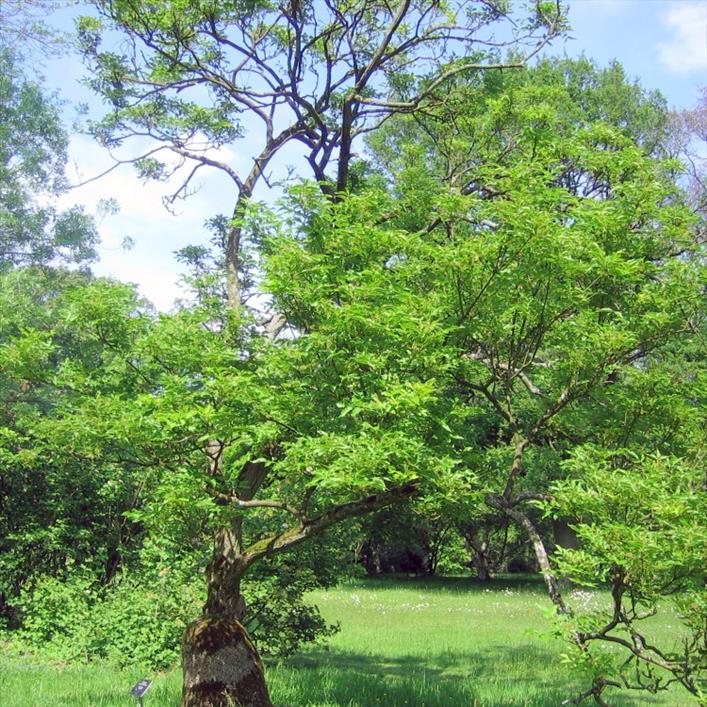Blue Ash
Fraxinus quadrangulata
Olive family (Oleaceae)
Nothing blue to be seen
If a young branch of the blue ash is placed in a glass of clear water, the water will turn blue. In the past Indians and settlers also extracted the blue dye from the inner bark. Yet there is nothing blue to be seen on the tree itself. The ash resembles the flowering ash in parks only the leaves are much larger, up to almost 40 cm long. Twigs have four ridges of cork that give them a quadrangular cross section when cut transversely, hence the species name quadrangulata.
Fraxinus quadrangulata is native to the Midwest USA in for example the states of Oklahoma, Michigan, Kentucky and Tennessee where it grows on moist, calcareous soil. The rootstock of another ash species was required in order to grow a specimen of blue ash in the acidic soil of Poort Bulten.
Themes
Crown jewel in the Poort Bulten Arboretum.
Attracts birds.
Early American pioneers made a blue dye from the inner bark, hence its common name.
The wood of blue ash is commercially used for a variety of products including tool handles, furniture, flooring, baseball bats, crates and barrels.
This specimen is a very unusual graft where the lower trunk is twice as thick as the grafted upper trunk.
Details
| Description: | Tree, 10-25 m. |
|---|---|
| Distributions: | North america from michigan south to arkansas and tennessee. |
| Habitat: | Calcareous substrates, limestone slopes and moist valley soils, 120–600 m in altitude. |
| Year cycle: | Perennial (polycarpic decidous) |
| Hardiness: | Colder than -4 f (very hardy) |
| Flowering period: | April - mei |
| Flower color: | Purple |
| Fruiting period: | September - december |
